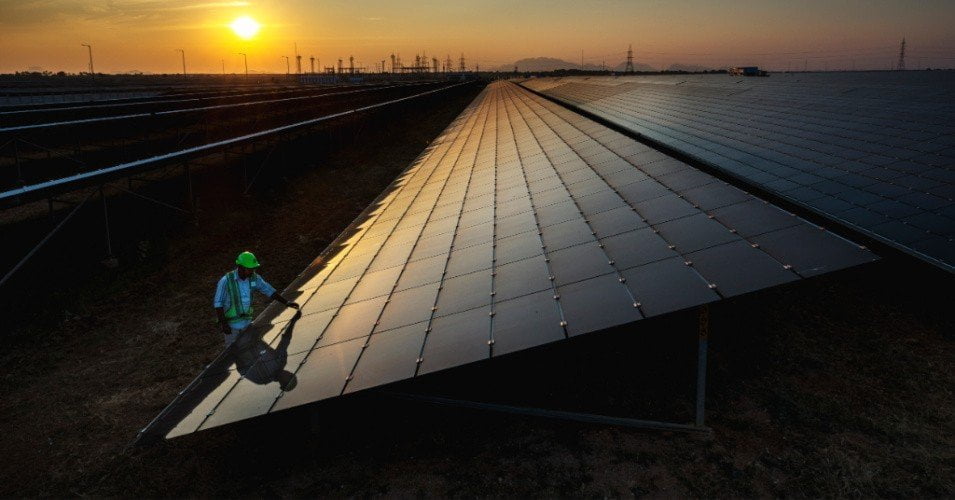From CommonDreams
At G20, Only India Is On Track to Meet Goals for Keeping Global Heating to 3.6° F
Although most of India’s electricity and heating now comes from carbon-intensive coal, the country has big plans to transition to renewables.

Gopalakrishna Devraj inspects the solar panels at the Fortum solar park in Karnataka state, one of indias bigest solar energy producers. (Photo: Jonas Gratzer/LightRocket via Getty Images)
The 2020 Climate Transparency report finds that India is on track to meeting the carbon dioxide emissions levels that, if all countries on earth did the same, would keep global heating to 3.6 degrees Fahrenheit (2 degrees centigrade).
The bad news? Of all the top 20 economies in the world (i.e. the G20), India is the only one, says The Weather Channel, that is on track to meet that 3.6° F. goal.
Although 3.6° F./ 2° C. does not sound like much, it would be a very challenging situation. This is the amount that the average surface temperature of the whole earth would go up. It includes the cold seas and Antarctica. So in any one place (say, Phoenix, AZ), the actual increase in average temperatures will be more.
India is above average on the contribution of renewables to power generation, with 27% coming from renewables. The G-20 average is only 21%.
Although most of India’s electricity and heating now comes from carbon-intensive coal, the country has big plans to transition to renewables. Despite the coronavirus downturn, India has made strides on renewables in 2020, adding 833 megawatts of rooftop solar in the first nine months of 2020. Some of this installation was supported by significant government subsidies for the sector, especially in Gujarat state. Gujarat has the largest solar farm in all of Asia.
SCROLL TO CONTINUE WITH CONTENT
Never Miss a Beat.
Get our best delivered to your inbox.
Solar energy has many uses in India beyond just electricity generation. Solar panels are being provided to rural families to run water pumps for drinking water.
In the third quarter, the country put in 438 megawatts worth of solar farms.
These numbers are lower than last year, given the sour economy and pandemic, but 2021 is expected to see a big rebound. All in all, 3.3 gigawatts of new solar is expected to be brought on line in 2020.
By 2022, India is expected to have a 100 gigawatt solar capacity. Its current solar capacity is 37 gigawatts, so the next two years will see nearly a tripling of solar in India.
This is the world we live in. This is the world we cover.
Because of people like you, another world is possible. There are many battles to be won, but we will battle them together—all of us. Common Dreams is not your normal news site. We don’t survive on clicks. We don’t want advertising dollars. We want the world to be a better place. But we can’t do it alone. It doesn’t work that way. We need you. If you can help today—because every gift of every size matters—please do. Without Your Support We Simply Don’t Exist.
Please select a donation method:




